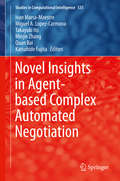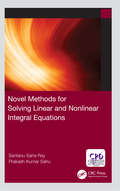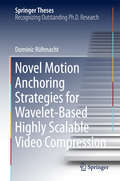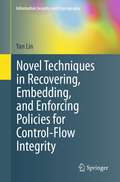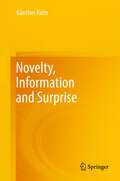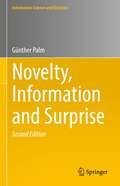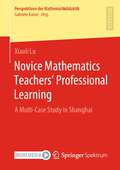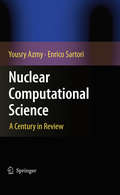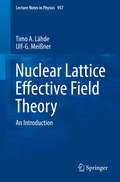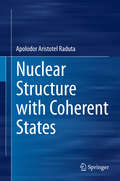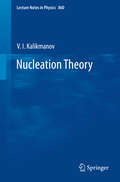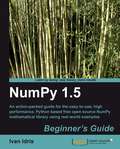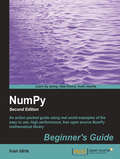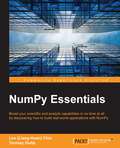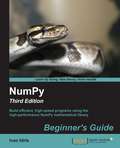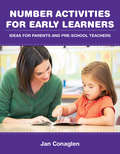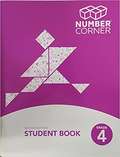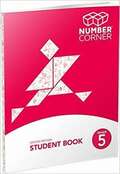- Table View
- List View
Novel Insights in Agent-based Complex Automated Negotiation
by Quan Bai Minjie Zhang Takayuki Ito Ivan Marsa-Maestre Miguel A. Lopez-Carmona Katsuhide FujitaThis book focuses on all aspects of complex automated negotiations, which are studied in the field of autonomous agents and multi-agent systems. This book consists of two parts. I: Agent-Based Complex Automated Negotiations and II: Automated Negotiation Agents Competition. The chapters in Part I are extended versions of papers presented at the 2012 international workshop on Agent-Based Complex Automated Negotiation (ACAN), after peer reviews by three Program Committee members. Part II examines in detail ANAC 2012 (The Third Automated Negotiating Agents Competition), in which automated agents that have different negotiation strategies and are implemented by different developers are automatically negotiated in the several negotiation domains. ANAC is an international competition in which automated negotiation strategies, submitted by a number of universities and research institutes across the world, are evaluated in tournament style. The purpose of the competition is to steer the research in the area of bilateral multi-issue, closed negotiation. This book also includes the rules, results, agents and domain descriptions for ANAC 2011 as submitted by the organizers and finalists.
Novel Methods for Solving Linear and Nonlinear Integral Equations
by Santanu Saha Ray Prakash Kumar SahuThis book deals with the numerical solution of integral equations based on approximation of functions and the authors apply wavelet approximation to the unknown function of integral equations. The book's goal is to categorize the selected methods and assess their accuracy and efficiency.
Novel Motion Anchoring Strategies for Wavelet-based Highly Scalable Video Compression
by Dominic RüfenachtA key element of any modern video codec is the efficient exploitation of temporal redundancy via motion-compensated prediction. In this book, a novel paradigm of representing and employing motion information in a video compression system is described that has several advantages over existing approaches. Traditionally, motion is estimated, modelled, and coded as a vector field at the target frame it predicts. While this “prediction-centric” approach is convenient, the fact that the motion is “attached” to a specific target frame implies that it cannot easily be re-purposed to predict or synthesize other frames, which severely hampers temporal scalability. In light of this, the present book explores the possibility of anchoring motion at reference frames instead. Key to the success of the proposed “reference-based” anchoring schemes is high quality motion inference, which is enabled by the use of a more “physical” motion representation than the traditionally employed “block” motion fields. The resulting compression system can support computationally efficient, high-quality temporal motion inference, which requires half as many coded motion fields as conventional codecs. Furthermore, “features” beyond compressibility — including high scalability, accessibility, and “intrinsic” framerate upsampling — can be seamlessly supported. These features are becoming ever more relevant as the way video is consumed continues shifting from the traditional broadcast scenario to interactive browsing of video content over heterogeneous networks.This book is of interest to researchers and professionals working in multimedia signal processing, in particular those who are interested in next-generation video compression. Two comprehensive background chapters on scalable video compression and temporal frame interpolation make the book accessible for students and newcomers to the field.
Novel Porous Media Formulation for Multiphase Flow Conservation Equations
by William T. ShaWilliam T. Sha first proposed the novel porous media formulation in an article in Nuclear Engineering and Design in 1980. The novel porous media formulation represented a new, flexible and unified approach to solve real-world engineering problems. It uses the concept of volume porosity, directional surface porosities, distributed resistance and distributed heat source and sink. Most practical engineering problems involve many complex shapes and sizes of solid internal structures whose distributed resistance is impossible to quantify accurately. The concept of directional surface porosities eliminates the sole reliance on empirical estimation of the distributed resistance of complex-shaped structures often involved in the analysis. The directional surface porosities thus greatly improve the resolution and modeling accuracy and facilitate mock-ups of numerical simulation models of real engineering systems. Both the continuum and conventional porous media formulations are subsets of the novel porous media formulation.
Novel Techniques in Recovering, Embedding, and Enforcing Policies for Control-Flow Integrity (Information Security and Cryptography)
by Yan LinThere are three fundamental components in Control-Flow Integrity (CFI) enforcement. The first component is accurately recovering the policy (CFG). Usually, the more precise the policy is, the more security CFI improves, but precise CFG generation was considered hard without the support of source code. The second component is embedding the CFI policy securely. Current CFI enforcement usually inserts checks before indirect branches to consult a read-only table which stores the valid CFG information. However, this kind of read-only table can be overwritten by some kinds of attacks (e.g., the Rowhammer attack and data-oriented programming). The third component is to efficiently enforce the CFI policy. In current approaches CFI checks are always executed whenever there is an indirect control flow transfer. Therefore, it is critical to minimize the performance impact of CFI checks.In this book, we propose novel solutions to handle these three fundamental components. To generate a precise CFI policy without the support of the source code, we systematically study two methods which recover CFI policy based on function signature matching at the binary level and propose our novel rule- and heuristic-based mechanism to more accurately recover function signature. To embed CFI policy securely, we design a novel platform which encodes the policy into the machine instructions directly without relying on consulting any read-only data structure, by making use of the idea of instruction-set randomization. Each basic block is encrypted with a key derived from the CFG. To efficiently enforce CFI policy, we make use of a mature dynamic code optimization platform called DynamoRIO to enforce the policy so that we are only required to do the CFI check when needed.
Novelty, Information and Surprise
by Günther PalmThe book offers a new approach to information theory that is more general then the classical approach by Shannon. The classical definition of information is given for an alphabet of symbols or for a set of mutually exclusive propositions (a partition of the probability space Ω) with corresponding probabilities adding up to 1. The new definition is given for an arbitrary cover of Ω, i.e. for a set of possibly overlapping propositions. The generalized information concept is called novelty and it is accompanied by two new concepts derived from it, designated as information and surprise, which describe "opposite" versions of novelty, information being related more to classical information theory and surprise being related more to the classical concept of statistical significance. In the discussion of these three concepts and their interrelations several properties or classes of covers are defined, which turn out to be lattices. The book also presents applications of these new concepts, mostly in statistics and in neuroscience.
Novelty, Information and Surprise (Information Science and Statistics)
by Günther PalmThis revised edition offers an approach to information theory that is more general than the classical approach of Shannon. Classically, information is defined for an alphabet of symbols or for a set of mutually exclusive propositions (a partition of the probability space Ω) with corresponding probabilities adding up to 1. The new definition is given for an arbitrary cover of Ω, i.e. for a set of possibly overlapping propositions. The generalized information concept is called novelty and it is accompanied by two concepts derived from it, designated as information and surprise, which describe "opposite" versions of novelty, information being related more to classical information theory and surprise being related more to the classical concept of statistical significance. In the discussion of these three concepts and their interrelations several properties or classes of covers are defined, which turn out to be lattices. The book also presents applications of these concepts, mostly in statistics and in neuroscience.
Novice Mathematics Teachers’ Professional Learning: A Multi-Case Study in Shanghai (Perspektiven der Mathematikdidaktik)
by Xiaoli LuThis book investigates three novice high school mathematics teachers’ professional learning processes in the early stages of their careers at schools in Shanghai, China. Teacher professional learning is examined as a complex and dynamic system that connects both cognitive and situated perspectives on learning theory. Inspiring mathematics teachers to adopt student-focused pedagogies is challenging, particularly in China where tensions in teacher-centred, content-focused and examination-oriented practices are predominant. The three novice teachers who participated in this study brought different beliefs and knowledge derived from their different individual experiences to bear on their teaching practices. However, they were strongly influenced by the environments in which they taught and mainly adopted a professional learning approach to teacher-centred practices, despite reporting that they favoured student-centred teaching practices. The study also observed professional learning towards student-centred pedagogical aspects in a single teacher case with mentorship support, indicating that student-centred pedagogies may be promoted within the constraints of the existing dominant teaching practice.
Nuclear Computational Science
by Yousry Azmy Enrico SartoriNuclear engineering has undergone extensive progress over the years. In the past century, colossal developments have been made and with specific reference to the mathematical theory and computational science underlying this discipline, advances in areas such as high-order discretization methods, Krylov Methods and Iteration Acceleration have steadily grown. Nuclear Computational Science: A Century in Review addresses these topics and many more; topics which hold special ties to the first half of the century, and topics focused around the unique combination of nuclear engineering, computational science and mathematical theory. Comprising eight chapters, Nuclear Computational Science: A Century in Review incorporates a number of carefully selected issues representing a variety of problems, providing the reader with a wealth of information in both a clear and concise manner. The comprehensive nature of the coverage and the stature of the contributing authors combine to make this a unique landmark publication. Targeting the medium to advanced level academic, this book will appeal to researchers and students with an interest in the progression of mathematical theory and its application to nuclear computational science.
Nuclear Lattice Effective Field Theory: An Introduction (Lecture Notes in Physics #957)
by Timo A. Lähde Ulf-G. MeißnerThis primer begins with a brief introduction to the main ideas underlying Effective Field Theory (EFT) and describes how nuclear forces are obtained from first principles by introducing a Euclidean space-time lattice for chiral EFT. It subsequently develops the related technical aspects by addressing the two-nucleon problem on the lattice and clarifying how it fixes the numerical values of the low-energy constants of chiral EFT. In turn, the spherical wall method is introduced and used to show how improved lattice actions render higher-order corrections perturbative. The book also presents Monte Carlo algorithms used in actual calculations. In the last part of the book, the Euclidean time projection method is introduced and used to compute the ground-state properties of nuclei up to the mid-mass region. In this context, the construction of appropriate trial wave functions for the Euclidean time projection is discussed, as well as methods for determining the energies of the low-lying excitations and their spatial structure. In addition, the so-called adiabatic Hamiltonian, which allows nuclear reactions to be precisely calculated, is introduced using the example of alpha-alpha scattering. In closing, the book demonstrates how Nuclear Lattice EFT can be extended to studies of unphysical values of the fundamental parameters, using the triple-alpha process as a concrete example with implications for the anthropic view of the Universe. Nuclear Lattice Effective Field Theory offers a concise, self-contained, and introductory text suitable for self-study use by graduate students and newcomers to the field of modern computational techniques for atomic nuclei and nuclear reactions.
Nuclear Structure with Coherent States
by Apolodor Aristotel RadutaThis book covers the essential features of a large variety of nuclear structure properties, both collective and microscopic in nature. Most of results are given in an analytical form thus giving deep insight into the relevant phenomena. Using coherent states as variational states, which allows a description in the classical phase space, or provides the generating function for a boson basis, is an efficient tool to account, in a realistic fashion, for many complex properties. A detailed comparison with all existing nuclear structure models provides readers with a proper framework and, at the same time, demonstrates the prospects for new developments. The topics addressed are very much of current concern in the field. The book will appeal to practicing researchers and, due to its self-contained account, can also be successfully read and used by new graduate students.
Nucleation Theory
by V. I. KalikmanovOne of the most striking phenomena in condensed matter physics is the occurrence of abrupt transitions in the structure of a substance at certain temperatures or pressures. These are first order phase transitions, and examples such as the freezing of water are familiar in everyday life. The conditions at which the transformation takes place can sometimes vary. For example, the freezing point of water is not always 0°C, but the liquid can be supercooled considerably if it is pure enough and treated carefully. The reason for this phenomenon is nucleation. This monograph covers all major available routes of theoretical research of nucleation phenomena (phenomenological models, semi-phenomenological theories, density functional theories, microscopic and semi-microscopic approaches), with emphasis on the formation of liquid droplets from a metastable vapor. Also, it illustrates the application of these various approaches to experimentally relevant problems. In spite of the familiarity of the involved phenomena, it is still impossible to calculate nucleation accurately, as the properties and the kinetics of the daughter phase are insufficiently well known. Existing theories based upon classical nucleation theory have on the whole explained the trends in behavior correctly. However they often fail spectacularly to account for new data, in particular in the case of binary or, more generally, multi-component nucleation. The current challenge of this book is to go beyond such classical models and provide a more satisfactory theory by using density functional theory and microscopic computer simulations in order to describe the properties of small clusters. Also, semi-phenomenological models are proposed, which attempt to relate the properties of small clusters to known properties of the bulk phases. This monograph is an introduction as well as a compendium to researchers in soft condensed matter physics and chemical physics, graduate and post-graduate students in physics and chemistry starting on research in the area of nucleation, and to experimentalists wishing to gain a better understanding of the efforts being made to account for their data.
Nuestras manzanas favoritas / Our Favorite Apples (Storytelling Math)
by Grace Lin¡Libro de cartón grueso ahora disponible en español-inglés bilingüe! La ganadora del Honor de Caldecott, Grace Lin, celebra las matemáticas para todos los niños, ¡en todas partes!Board book now available in bilingual Spanish-English! Caldecott Honor winner Grace Lin celebrates math for every kid, everywhere!Manny, Olivia y Mei van a recoger manzanas y clasifican sus manzanas rojas, verdes y amarillas por colores. Pero luego encuentran una manzana que tiene los tres colores. ¿Qué deberían hacer? Una exploración juguetona de la clasificación, la categorización y la amistad.Storytelling Math celebra a los niños usando las matemáticas en sus aventuras diarias mientras juegan, construyen y descubren el mundo que les rodea. Historias alegres y actividades manuales hacen que sea fácil para los niños y sus adultos explorar las matemáticas cotidianas juntos. Desarrollado en colaboración con expertos en matemáticas de TERC, una organización educativa con enfoque en ciencia, tecnología, ingeniería y matemáticas (STEM, por sus siglas en inglés), bajo una subvención de la Fundación Heising-Simons.Manny, Olivia, and Mei go apple picking and sort their red, green, and yellow apples by color. But then they find an apple that&’s all three colors. What should they do? A playful exploration of sorting, classifying, and friendship.Storytelling Math celebrates children using math in their daily adventures as they play, build, and discover the world around them. Joyful stories and hands-on activities make it easy for kids and their grown-ups to explore everyday math together. Developed in collaboration with math experts at STEM education nonprofit TERC, under a grant from the Heising-Simons Foundation.
Null Set
by Ted MathysNull Set collects the slightly obsessive possibilities that rise when we give them the space--odd jobs, trouble-making, and farm boy rambling, all in dialogue with mathematics, or William Faulkner, or other poets.From "Hypotenuse":HYPOTENUSEI write three, erase it, blow rubbershavings from the desk. Write its notation,erase it, blow shavings. Then three 3serased, shavings blown, persistfor the nonce, three of nothing, nowhereattending to discrete objects for counting,themselves objects at any rate. To kiss,sleep, and focus we know to closeour eyes, imagine. I do, see nothing.
NumPy 1.5 Beginner's Guide
by Ivan IdrisThe book is written in beginner's guide style with each aspect of NumPy demonstrated by real world examples. There is appropriate explained code with the required screenshots thrown in for the novice. This book is for the programmer, scientist or engineer, who has basic Python knowledge and would like to be able to do numerical computations with Python.
NumPy Beginner's Guide (Second Edition)
by Ivan IdrisThe book is written in beginner's guide style with each aspect of NumPy demonstrated with real world examples and required screenshots.If you are a programmer, scientist, or engineer who has basic Python knowledge and would like to be able to do numerical computations with Python, this book is for you. No prior knowledge of NumPy is required.
NumPy Essentials
by Tanmay Dutta Leo Liang-Huan ChinBoost your scientific and analytic capabilities in no time at all by discovering how to build real-world applications with NumPy About This Book * Optimize your Python scripts with powerful NumPy modules * Explore the vast opportunities to build outstanding scientific/ analytical modules by yourself * Packed with rich examples to help you master NumPy arrays and universal functions Who This Book Is For If you are an experienced Python developer who intends to drive your numerical and scientific applications with NumPy, this book is for you. Prior experience or knowledge of working with the Python language is required. What You Will Learn * Manipulate the key attributes and universal functions of NumPy * Utilize matrix and mathematical computation using linear algebra modules * Implement regression and curve fitting for models * Perform time frequency / spectral density analysis using the Fourier Transform modules * Collate with the distutils and setuptools modules used by other Python libraries * Establish Cython with NumPy arrays * Write extension modules for NumPy code using the C API * Build sophisticated data structures using NumPy array with libraries such as Panda and Scikits In Detail In today's world of science and technology, it's all about speed and flexibility. When it comes to scientific computing, NumPy tops the list. NumPy gives you both the speed and high productivity you need. This book will walk you through NumPy using clear, step-by-step examples and just the right amount of theory. We will guide you through wider applications of NumPy in scientific computing and will then focus on the fundamentals of NumPy, including array objects, functions, and matrices, each of them explained with practical examples. You will then learn about different NumPy modules while performing mathematical operations such as calculating the Fourier Transform; solving linear systems of equations, interpolation, extrapolation, regression, and curve fitting; and evaluating integrals and derivatives. We will also introduce you to using Cython with NumPy arrays and writing extension modules for NumPy code using the C API. This book will give you exposure to the vast NumPy library and help you build efficient, high-speed programs using a wide range of mathematical features. Style and approach This quick guide will help you get to grips with the nitty-gritties of NumPy using with practical programming examples. Each topic is explained in both theoretical and practical ways with hands-on examples providing you efficient way of learning and adequate knowledge to support your professional work.
NumPy: Beginner's Guide - Third Edition
by Ivan IdrisThis book is for the scientists, engineers, programmers, or analysts looking for a high-quality, open source mathematical library. Knowledge of Python is assumed. Also, some affinity, or at least interest, in mathematics and statistics is required. However, I have provided brief explanations and pointers to learning resources.
Numb and Number: How to Avoid Being Mystified by the Mathematics of Modern Life
by William HartstonLike it or not, our lives are dominated by mathematics. Our daily diet of news regales us with statistical forecasts, opinion polls, risk assessments, inflation figures, weather and climate predictions and all sorts of political decisions and advice backed up by supposedly accurate numbers. Most of us do not even pause and question such figures even to ask what they really mean and whether they raise more questions than they answer. We let the figures wash over us with no more than a glance. In this simple guide for anyone numbed by numbers, William Hartston explains with clarity and humor how to steer a safe path through the minefield of mathematics that surrounds us.
Numbed!
by David LubarWhen Logan’s class takes a trip to a math museum, his mischievous friend Benedict is sure it will be a boring day—until he discovers a robot and its creator in an off-limits area. The robot proves feisty, and soon both boys get zapped. They realize only later that they’d left the museum without their math skills. To get back the knowledge they need for school—not to mention buying food at the mall, divvying up dinner at home, and much more—they’ll have to get back to the museum and pass a series of math challenges. Being “numbed” teaches Logan and Benedict just how useful, and even fun, math can be.
Number Activities For Early Learners: Ideas for Parents and Pre-School Teachers
by Jan ConaglenThis e-book outlines interesting and age appropriate activities that can be carried out by parents and preschool teachers. It uses concrete materials so young children can visualize concepts, predict outcomes and display confidence, whilst learning from the suggested tasks.It will provide parents and preschool teachers with an insight into the importance of early basic mathematical knowledge.It will help develop the understanding and application of more complex skills that the student requires for later learning.The activities suggested are suitable for 3 years - 6 years old. This is usually preschool children up to second year at school.
Number Corner Second Edition Grade 5 Student Book
by The Math Learning CenterA mathematics textbook
Number Corner, Grade 2, Student Book, Spanish Edition
by The Math Learning CenterNIMAC-sourced textbook
Number Corner: Student Book
by Math Learning CenterThe Number Corner 2nd Edition Grade 3 Student Book provides students with opportunities to solve problems, conduct investigations, and practice skills in the context of familiar Number Corner Grade 3 lessons.
